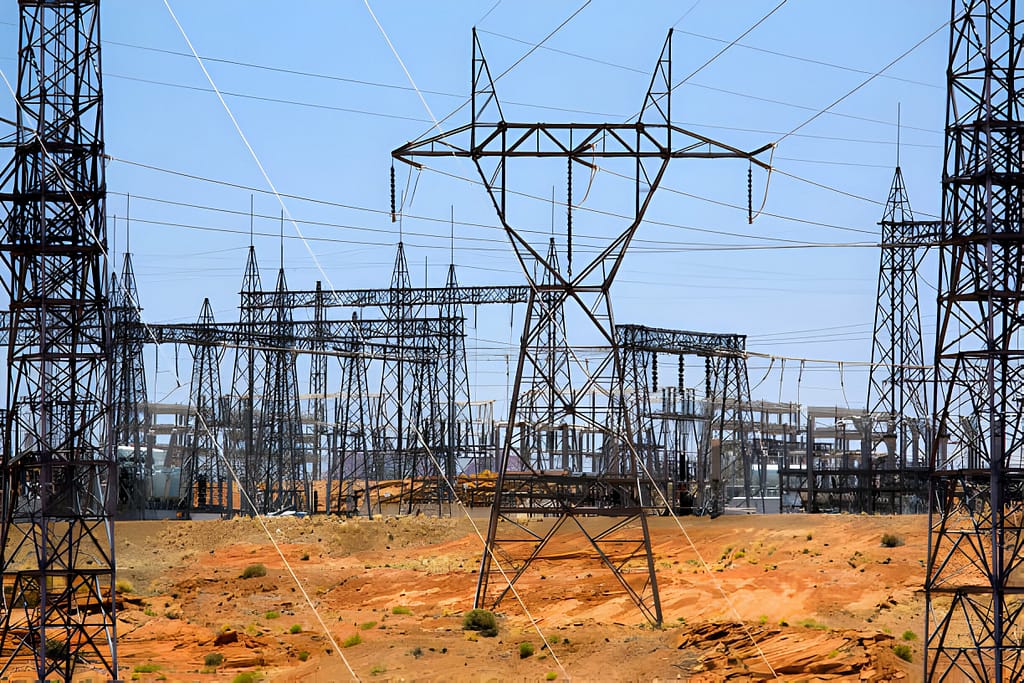In a delicate situation with implications for both water supply and clean energy, Lake Powell’s current water level is being closely monitored. The reservoir, spanning Arizona and Utah, serves as a crucial source for the Glen Canyon hydropower plant and provides drinking water for several states. While the recent data shows a slight improvement in water levels, concerns persist due to the reservoir’s history of low levels resulting from prolonged drought and overallocation.
Table of Contents
A Marginal Improvement Amid Ongoing Crisis
As of the latest update from the Bureau of Reclamation, Lake Powell’s water level stood at 3,568 feet above sea level. While this marks an increase compared to the same period last year, with a difference of 43 feet, it remains considerably below optimal levels. The improvement is attributed to a wet winter in the previous year that contributed to above-average snowpack, partially replenishing the reservoir.
Bart Miller, the healthy rivers director at Western Resource Advocates, acknowledges the incremental progress but underscores the ongoing challenge. He points to the need to align water demands with the natural supply from the Colorado River, which flows through Lake Powell and serves approximately 40 million Americans. Despite the positive impact of the recent wet year, low precipitation in recent months raises concerns about maintaining this delicate balance.
Hydropower Plant at Risk: A Critical Intersection

The focus on Lake Powell’s water levels is intensified by the proximity of the Glen Canyon hydropower plant. The 1,320-megawatt power plant is a significant contributor to clean energy, drawing attention to the vulnerability of hydropower in the face of climate-related challenges. The Bureau of Reclamation has highlighted the potential risks, indicating that if the water level drops significantly, the turbines essential for electricity generation could be compromised.
The Broader Context: Hydropower’s Increasing Volatility
Hydropower has long been regarded as a reliable source of carbon-free electricity, contributing 6% of the country’s energy, surpassing all other utility-scale renewable sources except wind. However, changing weather patterns, including droughts, are introducing volatility into hydropower generation. National figures reveal that 2021 and 2022 were among the lowest years for hydropower generation since 2010, showcasing the impact of extreme weather events on this traditionally stable energy source.
Addressing Environmental Concerns and Indigenous Perspectives
Beyond the immediate challenges faced by Lake Powell, there is a growing acknowledgment of the environmental and social implications of hydropower. Advocates argue that the construction of reservoirs and hydropower plants can have detrimental effects on ecosystems, displacing Indigenous communities and contributing to methane emissions. Some voices are calling for a reevaluation of the Glen Canyon Dam’s impact on the Colorado River, suggesting that allowing the river to flow freely could benefit both the environment and water availability.
Federal Response and the Larger Challenge
The Biden administration is actively engaging with states dependent on the Colorado River to implement water conservation measures. Revised operating guidelines, introduced in April, aim to provide better notice to operators of irrigation systems and water utilities about potential reductions. However, federal officials are grappling with symptoms of broader issues—climate change and an increasing water demand that surpasses the available supply.
While the current water level at Lake Powell offers a momentary relief compared to the previous year, it is far from a resolution. Miller emphasizes that significant work is needed to address the root problems of water scarcity and environmental sustainability. As the delicate balance between water supply, hydropower, and climate resilience continues, the challenges posed by Lake Powell serve as a reminder of the complex interplay between human demands and the natural environment.